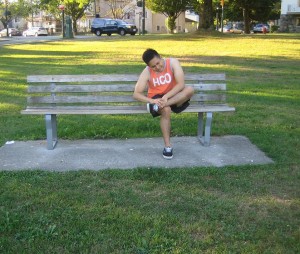The muscle group that is situated at the rear of the inferior leg is called as the calf. It is important to note that there are two main muscles in which both insert inside the heel through the Achilles tendon. Once the leg shrinks, tension is applied on the Achilles tendon, thus allowing the person to walk, jump or stand on the toes. Once the tension is too much due to repetitive activity or high impact, the Achilles tendon will end up torn or ruptured.
Pain
The indicative symptom of a damaged Achilles tendon is pain, tenderness or stiffness. This typically occurs 1 ½ inches above the spot where the Achilles tendon connects at the base of the heel. The pain tends to worsen with activity and becomes severe the day after exercising.
The individual will claim that the pain recedes faintly after the muscle and tendon warms up during any type of activity. Nevertheless, there is pain and stiffness along the tendon in the morning after the foot has rested throughout the night. During sleep, the foot rests with the toes pointed away from the head.

When the individual rises from sleeping, the Achilles tendon is strained once weight is applied on the foot. Always bear in mind that the pain can be triggered when the sides of the tendon are compressed. When it comes to pain management measures, all you have to do is to register for first aid training today so that you can readily provide relief to the individual with the condition.
Diminished range of motion and strength
Those who are suffering from a damaged Achilles tendon will also have diminished range of motion and strength in the lower leg and ankle. It simply means that the individual might not be able to rotate the ankle or raise the toe towards the face without experiencing significant pain. If the Achilles tendon is not provided with adequate support, the individual could not be able to perform various activities such as rising using the toes, run, jump or walk quickly.
Inflamed and thickened tendon
An Achilles tendon which has been subjected to damage will display thickening and deterioration as time passes by. In such circumstances, the deterioration will start to calcify particularly at the site of insertion into the heel bone. Take note that this thickening of the tendon can be felt over the Achilles tendon. In some cases, it can also be accompanied by swelling that worsens throughout the day when the individual engages in any form of activity.
Inability to engage in activity
Once the Achilles tendon is ruptured, the individual could no longer continue to engage in activities that were previously enjoyed. In such cases, the individual will experience a feeling of being kicked in the heel or hear a popping sound as the tendon ruptures.
